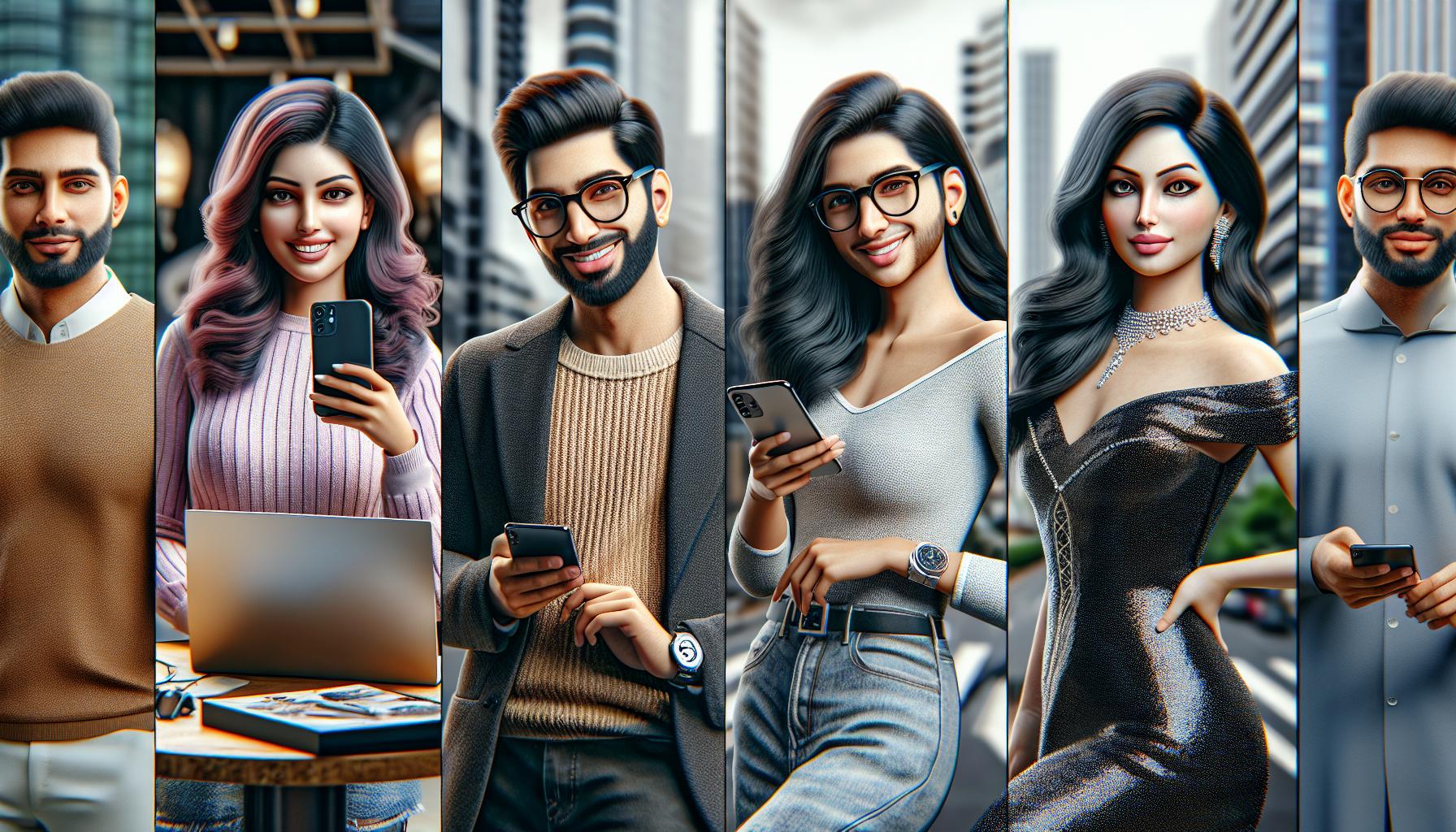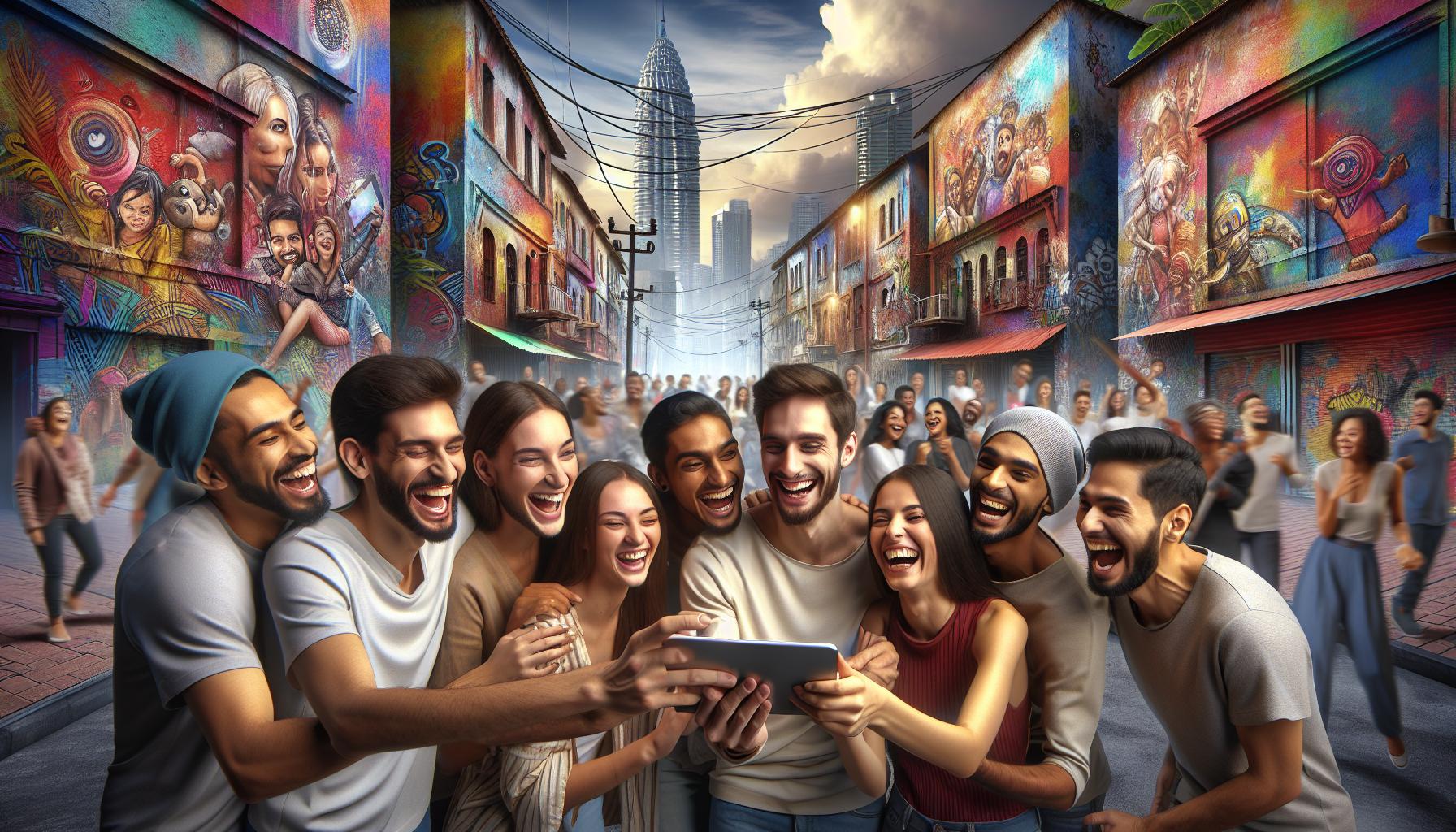In the bustling digital landscape of India, social media influencers have emerged as the new rock stars. With millions of followers hanging on their every post, these trendsetters wield a power that rivals traditional celebrities. From fashion to food, and travel to tech, they’re shaping opinions and driving trends like never before. Imagine scrolling through your feed and finding someone who can make even a bowl of dal look like a gourmet dish. That’s the magic of Indian influencers. They’re not just selling products; they’re crafting lifestyles and connecting with audiences in ways that are both relatable and entertaining. As brands scramble to partner with these digital dynamos, it’s clear that the influencer phenomenon is here to stay. Buckle up as we dive into the colorful world of India’s social media influencers and uncover what makes them tick.
India Social Media Influencers
India’s social media influencers play a crucial role in shaping consumer behavior across several sectors. With millions of followers, these figures possess the power to influence trends, making them essential partners for brands. Fashion influencers often showcase clothing lines through vibrant posts, appealing to various demographics. Food bloggers share recipes and restaurant reviews, enticing followers with unique culinary experiences.
Travel vloggers capture breathtaking locations, inspiring wanderlust in their audiences. Technology experts provide insights on the latest gadgets, guiding consumers towards informed purchasing decisions. The diversity among influencers allows them to reach niche markets effectively.
Metrics show that more than 80% of consumers trust influencer recommendations over traditional advertisements. The rise of platforms like Instagram and YouTube has enabled influencers to monetize their content, creating lucrative career paths. Engaging content often leads to high interaction rates, further solidifying their impact on brand visibility.
Moreover, influencer collaborations extend beyond single posts to include long-term partnerships and campaigns. Such collaborations frequently result in authentic content that resonates with audiences. Companies increasingly recognize the potential of influencer marketing, leading to specialized influencer agencies that cater to brand needs.
The dynamic landscape emphasizes the need for influencers to stay authentic while adapting to trends. In a competitive environment, those who maintain originality and foster genuine connections with their audience stand out. Statistics reveal that influencers with a more personal touch often achieve better engagement and conversion rates. Through their creativity and authenticity, India’s social media influencers continue to redefine marketing strategies across industries.
Popular Platforms for Influencers

Influencers in India leverage various platforms to engage audiences and collaborate with brands. Each platform offers unique features and demographics that cater to diverse content types.
Instagram stands out as a top choice for Indian influencers. With over 200 million users, it enables influencers to create visually stunning content. Fashion influencers frequently showcase outfits, while food bloggers share delectable meal photos. Brand partnerships thrive through sponsored posts, stories, and reels. Consumers engage actively, with more than 70% of users discovering new products via Instagram. Influencers cultivate personal brands, leading to significant follower loyalty.
YouTube
YouTube presents an extensive medium for influencers in India. It offers video content that captures attention effectively, with over 450 million users engaged on the platform. Vloggers share travel experiences, tutorial channels impart skills, and technology reviewers cover product unboxings. Influencers can monetize their content through ads and sponsorships, providing financial stability. Consumers trust video content, with 84% of people reporting they’ve been persuaded to buy a product after watching it on YouTube.
TikTok (Before Ban)
Before its ban, TikTok gained immense popularity among Indian influencers. The platform attracted over 120 million users, allowing creators to share short, engaging videos. Dance challenges, beauty tutorials, and comedic skits thrived, drawing considerable audience interaction. Influencers often collaborated with brands for sponsored content, tapping into its active user base. Data indicated that TikTok’s algorithm fostered visibility, empowering even new creators to reach vast audiences quickly.
Types of Influencers in India

Influencers in India can be categorized into three main types, each serving unique purposes in the digital marketing landscape.
Micro-Influencers
Micro-influencers typically possess followers ranging from 1,000 to 100,000. Their smaller audience often results in higher engagement rates. Communities around micro-influencers tend to be niche-oriented, allowing for more personalized interactions. Brands view partnerships with micro-influencers as cost-effective ways to reach targeted demographics. Authenticity plays a crucial role; audiences perceive micro-influencers as relatable and trustworthy. Thus, collaboration with these influencers often leads to strong connections and increased brand loyalty.
Macro-Influencers
Macro-influencers generally have follower counts between 100,000 and 1 million. Unlike micro-influencers, they often reach a broader audience, making their content visible to more potential customers. Brands often engage macro-influencers for campaigns that require extensive reach. These influencers tend to have established credibility in their fields, allowing them to sway consumer opinions effectively. Their content focuses on lifestyle and trends, aligning well with various brand messages. Therefore, collaboration with macro-influencers can create significant visibility for brand campaigns.
Celebrity Influencers
Celebrity influencers are high-profile figures with follower counts exceeding 1 million. They include film stars, athletes, and musicians who command vast audiences. Collaboration with these influencers brings instant recognition and prestige to brands. They often create aspirational content that resonates with fans, enhancing brand desirability. Brands typically invest larger budgets in working with celebrity influencers, expecting extensive reach and impact. The association with well-known figures elevates brand visibility and can drive substantial sales.
Impact of Influencers on Brands

Social media influencers in India significantly reshape marketing strategies and consumer behavior. Their unique approaches drive brand engagement and foster deeper connections with audiences.
Marketing Strategies
Brands leverage influencer partnerships to create authentic content that resonates. Collaborations often extend into ongoing campaigns, enhancing brand loyalty through continuous interaction. Influencers provide valuable insights into niche markets, allowing brands to tailor their messaging effectively. Approximately 88% of brands report that influencer marketing yields a positive return on investment. Utilizing platforms such as Instagram and YouTube, companies capitalize on visual storytelling to reach consumers. The trend emphasizes the importance of genuine endorsements over traditional advertisement methods, reinforcing their effectiveness.
Consumer Behavior
Consumer trust in influencer recommendations has surpassed traditional advertising methods, with over 80% of followers believing in their sincerity. This trust drives purchasing decisions and bolsters brand credibility. A significant number of consumers, around 60%, admit to following influencers who align with their interests or values. Influencers also create a sense of community among followers, making them feel more connected to brands. Engagement rates often outpace conventional advertising, with influencer content drawing higher interactions. As brands recognize this shift, they adapt their strategies to emphasize authenticity in their campaigns.
Challenges Faced by Indian Influencers
Indian influencers encounter several challenges in their pursuit of success. One major issue is content creation. Crafting engaging and original content consistently becomes demanding as trends evolve rapidly. Creativity needs to flow regularly to maintain audience interest. Influencers must also navigate the need for balance between personal expression and audience expectations. High-quality visuals are essential, especially on platforms like Instagram where competition is fierce. As the industry matures, finding innovative ways to stand out has become increasingly critical.
Regulation and ethics pose additional hurdles. Influencers must adhere to guidelines set by the Advertising Standards Council of India. Transparency in partnerships impacts credibility; promoting products without clear disclosure could lead to distrust among followers. Ethical considerations also revolve around the promotion of products, especially those relating to health and wellness. Navigating this landscape requires influencers to be informed about laws and regulations while prioritizing authenticity in their engagements. Such challenges demand ongoing adaptation and vigilance to thrive in the dynamic digital space.
The landscape of social media influencers in India is vibrant and continually evolving. These influencers hold the power to shape trends and consumer behavior across various industries. Their ability to connect authentically with audiences sets them apart from traditional advertising methods.
As brands increasingly tap into this potential, the importance of genuine partnerships becomes clear. The success of influencers hinges on their creativity and ability to adapt to changing trends while maintaining trust with their followers.
With the rise of new platforms and the diversification of influencer types, the future looks promising. The impact of Indian social media influencers will only grow, making them integral to modern marketing strategies.

